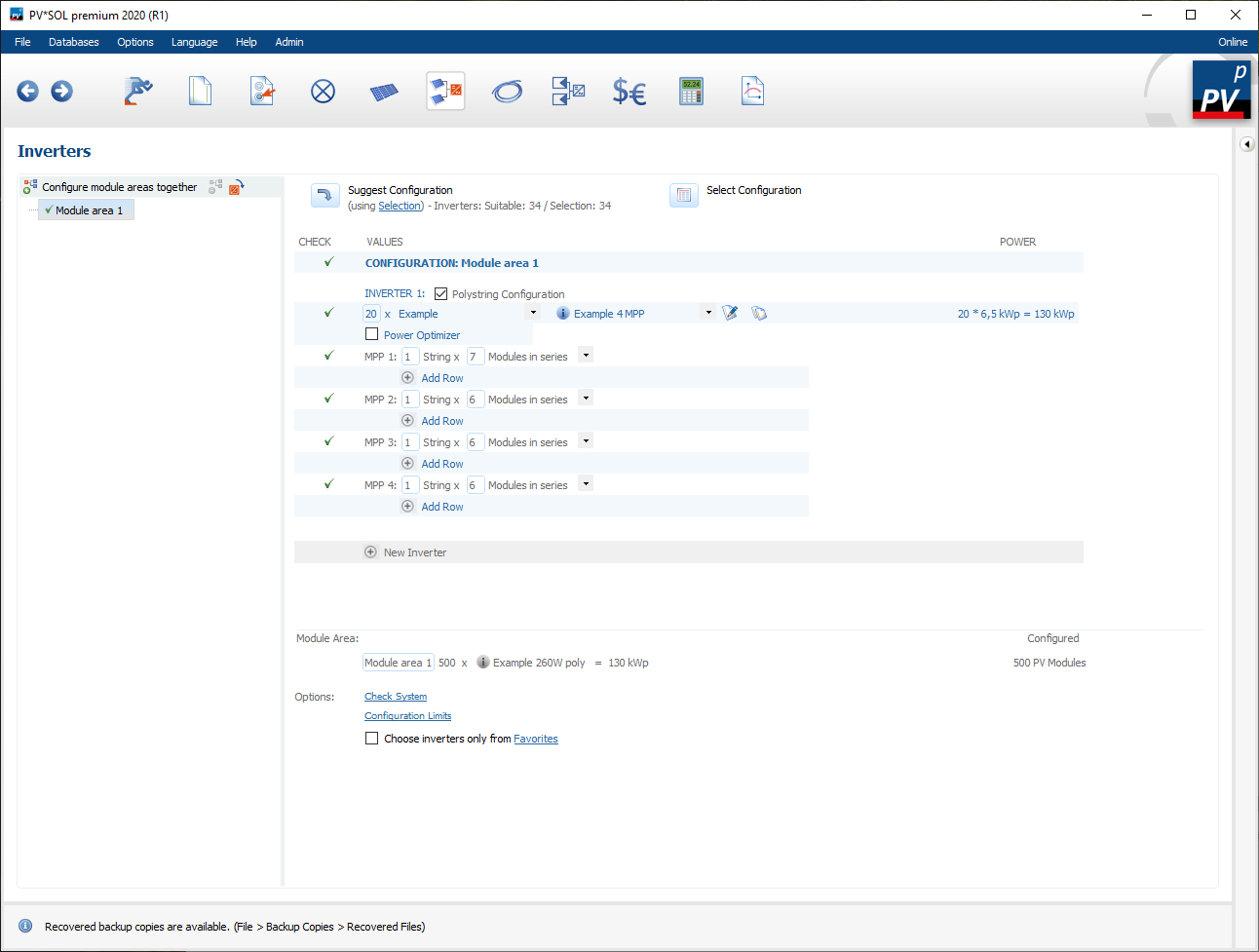Polystring connection
Using polystring interconnection, completely different PV modules or strings can be connected in parallel or in series to an MPP tracker. This opens up new possibilities of configuration:
- Modules from an east-west roof can be connected in parallel or in series to an MPP tracker.
- If you have a few modules on a roof dormer with different roof pitches, these can be integrated into existing strings using a polystring.
- Defective modules that are no longer available can be replaced by similar new modules.
- A few shaded modules can be equipped with performance optimizers, while the rest of the string is connected without performance optimizers.
A polystring circuit can only be defined manually, it is not available in the circuit proposals.
If the  Polystring interconnection is selected, new strings can be defined for an MPP tracker using the
Polystring interconnection is selected, new strings can be defined for an MPP tracker using the
 button.
The strings are connected in parallel as standard.
Various strings can be connected in series by clicking on the
button.
The strings are connected in parallel as standard.
Various strings can be connected in series by clicking on the  Connect strings in series button.
The series connection can also be combined with a parallel connection, as the following example (Figure: Polystring connection: Example series connection) illustrates.
Connect strings in series button.
The series connection can also be combined with a parallel connection, as the following example (Figure: Polystring connection: Example series connection) illustrates.
Here 2 strings are connected in parallel on an MPP tracker. String 1 consists of two strings connected in series with 10 modules each and string 2 also consists of 10 PV modules. Accordingly, 20 and 10 modules are connected in parallel.
This wiring serves as an example and should not be implemented in practice.
System check
Since a wide variety of modules or strings are interconnected in a polystring circuit, the configuration check changes.
For system checks, the strings with the lowest MPP voltage and the highest MPP voltage are checked for parallel strings. If different PV modules are connected in a string, the module with the highest MPP current serves as a guideline for system testing.
If the MPP voltages between the strings differ by more than 4%, the wiring is within the tolerance range
![]() .
However, if the MPP voltages between the strings differ by more than 10%, the wiring is in the blocking range.
.
However, if the MPP voltages between the strings differ by more than 10%, the wiring is in the blocking range.
![]() .
The same limits apply to different currents in one string.
.
The same limits apply to different currents in one string.
Schematic circuit diagram
Using the polystring circuit also changes the circuit diagram. Parallel strings are connected together in front of the inverter (connection point circle). Series connections with different sub-strings are connected together to form a string, this is indicated by arrows and letters.
See also


